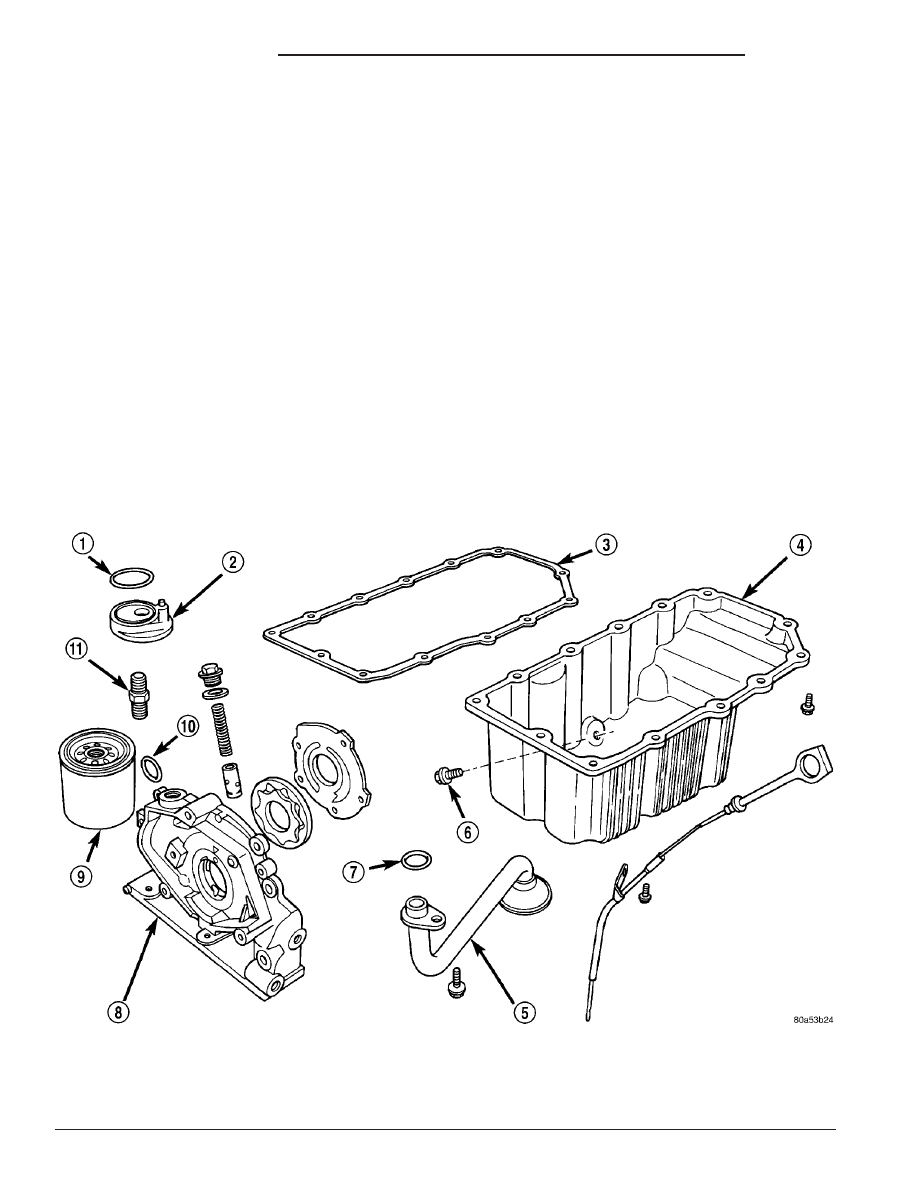Dodge Neon / Neon SRT-4. Manual - part 243

LUBRICATION
DESCRIPTION
The lubrication system is a full-flow filtration,
pressure feed type. The oil pump (Fig. 105) is
mounted in the front engine cover and driven by the
crankshaft.
OPERATION
Refer to (Fig. 106) for lubrication system flow.
Engine oil is drawn up through the pickup tube and
is pressurized by the oil pump and routed through
the full-flow filter to the main oil gallery running the
length of the cylinder block. A diagonal hole in each
bulkhead feeds oil to each main bearing. Drilled pas-
sages within the crankshaft route oil from the main
bearing journals to the connecting rod journals. A
vertical hole at the number five bulkhead routes
pressurized oil through a restrictor up into the cylin-
der head. The restrictor that is integral to the cylin-
der head gasket, provides increased oil flow to the
main gallery. The rocker shafts route oil to the rocker
arms/hydraulic lash adjusters. Oil returning to the
oil pan from the pressurized components supplies
lubrication to the valve stems. The cylinder bores
and wrist pins are splash lubricated from directed
slots on the connecting rod thrust collar.
DIAGNOSIS AND TESTING
ENGINE OIL LEAK INSPECTION
Begin with a thorough visual inspection of the
engine, particularly at the area of the suspected leak.
If an oil leak source is not readily identifiable, the
following steps should be followed:
(1) Do not clean or degrease the engine at this
time because some solvents may cause rubber to
swell, temporarily stopping the leak.
(2) Add an oil soluble dye (use as recommended by
manufacturer). Start the engine and let idle for
approximately 15 minutes. Check the oil dipstick to
make sure the dye is thoroughly mixed as indicated
with a bright yellow color under a black light.
Fig. 105 Engine Lubrication Components
1 - O-RING
7 - O-RING
2 - OIL FILTER ADAPTER
8 - OIL PUMP BODY
3 - OIL PAN GASKET
9 - FILTER
4 - OIL PAN
10 - O-RING
5 - OIL PICK-UP TUBE
11 - NIPPLE
6 - DRAIN PLUG
9 - 66
ENGINE 2.0L SOHC
PL/SRT-4